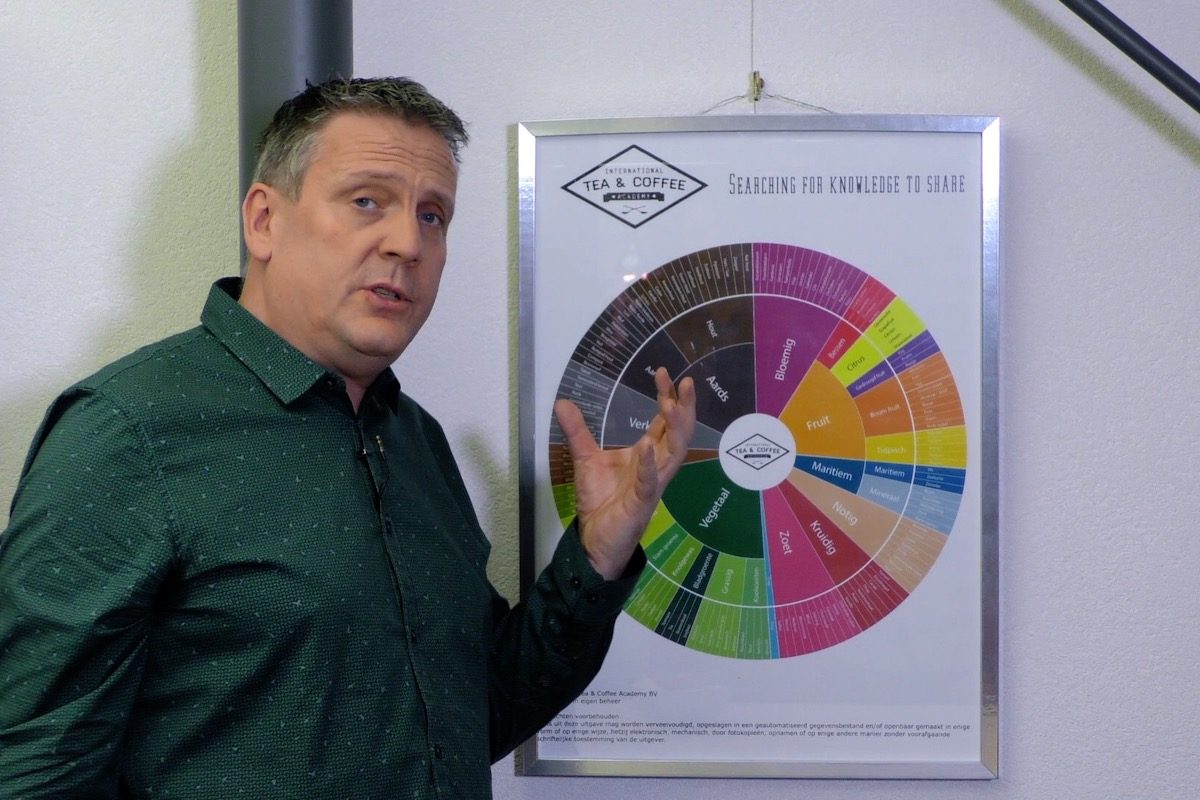Richard Schukkink has a passion for tea and coffee. What started as a hobby in the attic has turned into a real academy: the International Tea & Coffee Academy (ITC Academy). As a child he brought back many special teas from his holiday destinations. Wat ooit begon als liefhebberij op een zolderkamer is inmiddels uitgegroeid tot een heuse academie. Schukking acts as the CEO of the ITC Academy in Zeewolde in the Netherlands and travels the world curious for all that is to learn about tea. We asked him to explain the Tea Flavor Wheel.
“What we see here is what we call a tea flavor wheel. We designed this wheel to help our students to determine the tastes and aromas in tea. It’s quite easy to use actually. You start at the very inside of the circle, and it’s quite easy for most tea drinkers to determine whether a tea is earthy, fruity, or more vegetable.”
“After you determine, for instance, that it’s very fruity, we ask: what kind of fruit is it? Is it citrus or is it more berry-like? If it’s citrus, then we ask is it an orange, or a grapefruit, and so on. It really helps determine the flavors in tea when you talk to your fellow students, to customers or guests in the restaurant.”
“We always start with the base notes: Base notes like flowery, fruity, marine, nutty, herbal sweet, vegetable, animal-like, charred, and earthy. When you’ve determined that the base note is flowery the sub notes can be hops, jasmin, or more like a rose for instance. When we look at fruit, is it a berry or is it a citrus flavor? And if it’s citrus, is is it more like a grapefruit or a lemon?”



